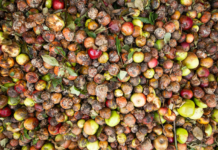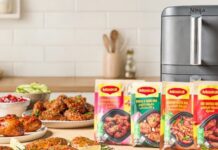Coca-Cola, an international soft drink manufacturer recently announced that it will be temporarily removing the labels from its 500ml packs of Sprite and Sprite Zero (sugar-free) on-the-go bottles in a limited trial of label-less packaging. The bottles, instead of labels, will be decorated with an embossed logo on the front whereas product and nutritional information will appear laser-engraved on the back of the pack.
In addition, the Sprite bottles which were originally green will be available in clear see-through bottles (Just like Coca-Cola bottles) worldwide and will be 100% rPET as reported by IndiFoodBev. This step further enhances the ease of incorporating recycled material into a circular and sustainable fashion.
According to the company, removing the labels simplifies the recycling process despite the existing labels being fully recyclable. Eliminating the labels removes the entire procedure of peeling labels before recycling and the amount of packaging material used overall.
According to Javier Meza, vice president of marketing for Coca-Cola Europe, the trial announced by the company is a milestone for the beverage industry. It’s the first time these two technologies have been used in a pilot on a global scale, where a Coca-Cola product will appear in a label-less single-unit bottle with laser engraved information. Although the design change may sound simple, this is a big shift from a marketing perspective. This trial could contribute to longer-term changes in the way brands communicate with their consumers.
“We want to help our customers minimize the environmental impact of the products they buy, including removing plastic and packaging when possible,” says Tesco head of packaging and food waste strategy, James Bull. “This trial of label-less packaging by Sprite is a great example of how brands are innovating to provide those solutions.”
Like existing Sprite packaging, the clear, 100% recycled PET bottles feature non-recyclable green and transparent attached caps identifying them as Sprite or Sprite Zero, respectively.
In recent years, Coca-Cola has introduced several design changes to help reduce packaging waste, including turning Sprite bottles from green to clear plastic to make them easier to recycle back into bottles. It has also introduced attached caps to its bottles, ensuring the cap stays connected to the bottle after opening to reduce the potential for littering, and it has invested in new designs to reduce the amount of packaging it uses, such as creating lightweight bottles and reducing the materials used in external packaging.
Although laser engraving sounds interesting the idea doesn’t seem to be very practical, especially for information such as nutrition and expiration to be laser engraved. A carbonated soft drink has no nutritional value at all and is consumed solely as a refresher. Consumer behavior shift towards reducing calorie intake becomes an important aspect. Images of the trial-edition bottles floating on the internet do showcase the engraving on the product but only on the front, the look at the back, as of now has been left to the imagination of a consumer.
Even before this change, the printing on labels of soft drinks is already small enough to go unnoticed by a vast majority of consumers. If the bottle gets simply laser engraved and not printed, there’s a possibility that the information might not even be readable by many, unless someone is an expert in braille language.
IndiFoodBev — authentic, impactful and influential
An English-language food and beverage processing and packaging industry B2B platform in print and web, IndiFoodBev is in its third year of publication. It is said that the Indian food and beverage industries represent approximately US$ 900 billion in revenues which implies more than 20% of the country’s GDP. Eliminating the wastage on the farmside can help to deliver more protein to a higher number of the population apart from generating sizable exports. The savings in soil, seeds, water, fertilizer, energy and ultimately food and nutrition could be the most immense contribution that country is poised to make to the moderation of climate change.
To improve your marketing and grow sales to the food and beverage processing and packaging industry, talk to us. Our research and consulting company IppStar [www.ippstar.org] can assess your potential and addressable markets in light of the competition. We can discuss marketing, communication, and sales strategies for market entry and growth.
Suppliers and service providers with a strategy and budget for targeted marketing can discuss using our hybrid print, web, video, and social media channels to create brand recognition linked to market relevance. Our technical writers are ready to meet you and your customers for content.
The second largest producer of fruit and vegetables in the world is continuously expanding processing capacities and delivery systems with appropriate innovative technologies. We cover product and consumer trends, nutrition, processing, research, equipment and packaging from farm to thali. Get our 2025 media kit and recalibrate your role in this dynamic market. Enhance your visibility and relevance to existing markets and turn potential customers into conversations. Ask for a sample copy of our bi-monthly in print or our weekly IndiFoodBev eZine each Wednesday.
For editorial info@ippgroup.in — for advertisement ads1@ippgroup.in and for subscriptions subscription@ippgroup.in
Naresh Khanna – 10 February 2025
Subscribe Now











